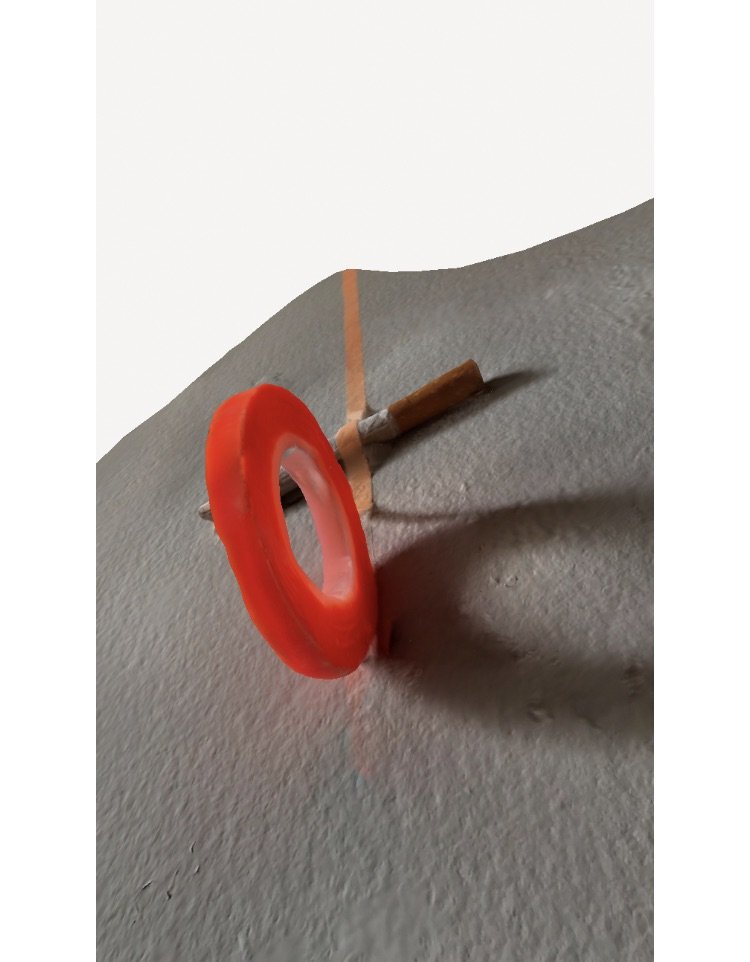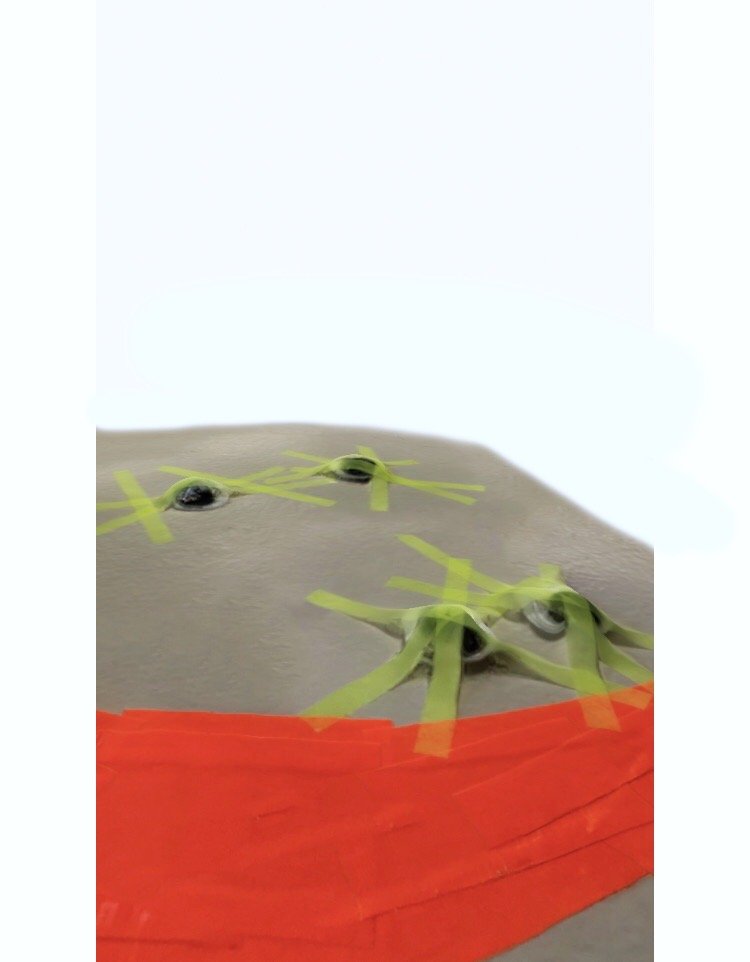the tape sketches continue!…
*** oh the ground treasure glows ***
the tape sketches continue!…
*** oh the ground treasure glows ***


dispose & expose


“… B: What is that? C: Feels around…”

unconscious agreements. someone else said yes to this vision.


Hamburger Helper 02
#thesketchINGcontinues #sketCHINGCHING💰💰



Hamburger Helper 01


4-way soul exchange full stop



feels like… wrong.quit.stop.stop again.zero.death.done.over.never again.quit.now.death rattle.sigh.light.exposure.release.clearing.softness.cleansing…


Just like if Zombies had feelings…


One more sketch…

And, another!


You may have noticed; I’ve started a new body of work entitled re-preserve. As I dive more deeply into the creation of the objects, I’ve formulated meaning and (somehow Haha) captured it into some words for you to savor. Please, enjoy!
Candy Stick, Nut Pack, and Puffed Rice Cake Stack are part of a series entitled re-preserve, a body of work that explores our human tendency toward the act of preservation through transmedial form and material alchemy.
Each original consumable good was 3D scanned, 3D printed and packaged in bioplastic containing aggregate fragments of the original packaging material. The new artifice representations are simultaneously vestige and simulacrum of the manufactured fats and sweets and prototype objects with novel one-of-a-kind packages.
Through 3d scanning, new skins get created: temporal physical matter transforms into a hollow, nutrient-less, seductively undulating artifice point cloud. The indigestible numerical densities exist frozen in virtual space, suspended in time, forever accessible by open-source sharing, remnant, and blueprint for future re-creation. When reformed into the physical matter as 3D printed polylactic acid “mental chew toys,” the new objects resonate as placeholders, still-life snapshots of life for contemplation. The contrast in materials, both digestible and indigestible, once wrapped in waste by-product and bioplastic elicits attention to the desire for mindful consideration of materiality. Why and how are we choosing to feed and preserve ourselves and our environment? And are these feeding and nourishing practices supportive and empowering to our shared human experience, or are they undermining our safety and well-being as an equitable, globally interconnected, thriving human species?

I’ve had the thought to do this many times as a “tape it up!” sketch —- just dropped in to mind first while driving lyft a couple years ago around Florida, and then again recently while walking Ann Arbor —— so here it is!
Tape it up! #2
For those of you that followed my Instagram you might remember the first tape it up that featured a lovely little bouquet of flowers taped up with a small piece of white tape. An oh so, spring-time feeling. The series has now evolved into a “sexy-exposition of breakfast delights,” with a nastily delicious pop tart… Pop it up, ya lucky breakfast-lovers!
During Florida State University’s remote months that resulted from COVID19, I participated in a Diversity and Inlusion Training. Optional to the certificate was the opportunity to create a Theory to Action Project. I chose to respond to the project promot by creating an open source guide featuring some of my skills from my life experience outside of academia. The guide features mediations and creative research opportunities for connecting more deeply to yourself and for allowing the possibility of deeper interpersonal connections in seemingly/unseemingly diverse environments. Check it out here!
I've recently started contributing innovative biomaterial recipes to an open source material library; materiom.org.
I have been aiming to source ingredients that are ethical, sustainable, and certified organic. Some of the notable contributions are natural dyes from fruits and teas, and a guar gum bioplastic.
There is something about the experience of creating a material from scratch, and then utilizing the material in an artwork that is satisfying to me right now... I hope the work inspires!
In addition to assisting students, faculty, and staff in the Department of Art at Florida State University create projects, I get the opportunity to research and engage with the Florida State arts community. Near the end of last year, I received a call from the CEO of the Florida Cultural Alliance, Jennifer Jones, who was interested in finding a source to produce a series of customized 3D printed trophies for Florida State legislators who have advocated for the arts. After speaking with Jennifer and the Department of Art about the project, we decided to manufacture the customized 3D printed trophies through the Digital Media Fab Lab as a gift for the FCA.
To create the trophies, we positioned and 3D scanned drawing dolls in postures that represented the characteristics of the legislators. After we collected the 3D data, we refined the scans, designed customized bases, and created prototypes. Once we achieved a satisfying 3D print, we sanded and painted the surfaces to complete the trophies. The finished trophies were awarded to the Florida State Legislators on Wednesday, January 26th during the Advocacy for the Arts rally at the Florida State Capital Building.
For details about the fabrication process visit the Florida State University, Department of Art Lab’s blog. To read the official Florida State University press release visit the College of Fine Art’s Community Collaboration news. To learn more about the Florida Cultural Alliance visit their website.
I recently re-discovered this 3D-printed PLA dish prototype made by an Intern, Becca Young, in Spring 2018. When this was made we were working on a number of projects that featured sacred geometry. This dish design was intended to be part of a line of interior home-goods. The project has yet to be realized as it was intended, however, when I was looking at it today, my interpretation of it changed as a result of the time passed. It’s interesting to see desires manifest and perceptions of them evolve over time to fit the present moment…

Part of the research being conducted through my position as Digital Media Labs, Manager is in Open Source. While remote many contributions to global communities have been made, assets have been created, lots of time and energy invested in several initiatives, and most recently an Open Source Demonstration was published.
For those interested in Digital Fabrication processes, visit the Resources webpage I created for the Department of Art. There are several guides and demonstrations linked.
Organic Banana



peal/peel
It was all right here, all along… Ink Studies: Incense and Sage Ash, Organic Blue-Green Superfood, Organic Hibiscus Tea, Tung Oil, and Filtered Water.
I set up materials for the study: Incense and Sage Ash, Organic Blue-Green Superfood, Hibiscus Tea, Tung Oil, Water, some writing implements, paper napkins, and watercolor paper.
I collected ash from an incense holder I cleaned recently. I am using a little of what was inside here and have the intention to make a composite material with the remainder.
The incense and sage ash combined with water produces the light brown wash that can be smoothed out by adding more water to the brush and paper, similar to watercolor pigments.
Triquetra sells an organic supplement, Blue-Green Superfood, composed of 50% Spirulina and 50% Chlorella. In a small dish, I ground three of these tablets into algae powder. I apply the algae to the surface of the paper like the ash, with water on a brush.
For the hibiscus tea ink, I boil tea leaves and filtered water until the majority of the water evaporates. I remove the tea leaves and store them for another time. I appreciate the way Hibiscus Tea and water appear on paper. As the material absorbs, the color transitions from light pink to lavender. When more material is applied, the ink color retains saturation, and less oxidation occurs.
Water-based washes.
Tung Oil Inks. I drip oil into the ink and mix these with a toothpick. I appreciate the heightened saturation, ability to build up a thicker layer of ink, and texture created by the paper when the brush has less ink on it.
Hibiscus Tea, Tung Oil
Algae, Tung Oil
Incense and Sage Ash, Tung Oil
I considered a number of mark-making tools for this study, however, I never utilized the blender. It would be interesting to see the blender applied to paper with the ash and algae.
I use Hope’s 100% Pure Tung Oil, a non-toxic oil made from the nut of a Tung tree. I am very aware of materials what I am putting into the environment, so I prepared another container to hold all of the Tung Oil soaked napkins and toothpicks from mixing. I also contain the remainder of the unused oil for another time. While Tung Oil is non-toxic and safe for the environment, it can be flammable. I store the waste in an air tight container, and avoid contact with skin. I recommend looking at the SDS sheet if you choose to utilize the product.
I appreciate all of the inks and I can see many applications for each.
After reflecting on the purpose of incense and how I utilize them, I've decided that the ink ash and oil is one of the most profound combinations of media an artist could use. So, I addressed an envelope containing something very meaningful inside with the rest of the media from this study. I am looking forward to seeing what the recipient says in response, if anything.